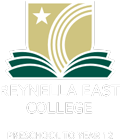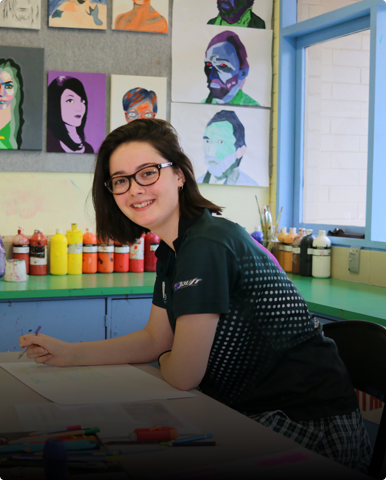This page provides resources for parents/caregivers to support their children in Years 7-12 with flexible learning
Click the categories below for further information:
- Supporting your child during flexible learning
- Wellbeing
- Curriculum
- Accessing SEQTA
- Contacting the school
- Online resources/extension activities
What to expect from your child’s teacher
Your child’s teacher will be available for online communication (SEQTA message, email or video call) during scheduled lessons for their subject. They will also communicate expectations of learning and assessment via the SEQTA page for their class. They will provide feedback on learning and follow up with you if work is not being submitted.
How you can support your child
Students need routine and certainty. You can support your child by:
- creating clear routines and expectations
- providing a safe and quiet space to work in
- supervising them at a level appropriate to their development
- checking in with them often to help manage and pace their work
- monitoring how much time they spend online and balancing this with physical activity
- checking communications from teachers and staying in contact with your child’s school or early learning centre.
Setting up a learning environment at home
Every home is different. A quiet and comfortable learning space will help your child learn.
Space and environment
Some students may have usual places where they do their homework. This space might not be suitable to study or learn at for a long time.
The best learning space is:
- a shared family space, such as a lounge room or dining room (not in their bedroom)
- a place that can be quiet at times
- near a strong internet or wifi signal
- somewhere that an adult is present and monitoring the learning
- near the items your child needs for learning, including stationery and power points
- free from trip hazards
- open, with natural light and without glare
- set up with a comfortable chair and desk or table.
Routines and expectations
Setting up expectations and routines will help your child learn. You can do this by:
- maintaining normal morning and evening routines
- structuring the day with regular mealtimes and bedtimes
- setting up the day based on their regular schedule or timetable
- starting and ending each day with a ‘check-in’
- encouraging regular food and drink break times throughout the day, as well as small breaks for stretching or to move around
- checking in with them throughout the day to help keep them focused and on track
- following their usual school timetable
Communicating with your child
You can stay involved with your child’s learning by asking them questions. This helps them to manage the instructions they receive from the school and to set priorities for their learning.
At the start of the day, ask:
- What are you learning today?
- What are your learning targets or goals?
- How will you be spending your time?
- What resources do you need?
- What support do you need?
At the end of the day, ask:
- What did you learn from today?
- What did you enjoy about today’s activities?
- What was challenging? How can we work through the challenge?
- What went well today? Why were they good?
- Are you ok? Do you need to ask your teacher for something?
- Do you need help with something to help tomorrow be more successful?
Wellbeing
Learning from home for a long time can cause stress and anxiety. Here are some tips to help you look after your child’s wellbeing. Make sure everyone understands what’s happening. Talk openly and calmly to your child and the entire family about what is happening. Understanding the situation will help to reduce anxiety.
Exercise regularly.
Encourage regular exercise. Some ways you can do this are:
- physical activity apps
- dancing
- floor exercises
- yoga
- walking around the garden
- home exercise equipment
- playing with the family pet
- playing ball games or playing with other sporting equipment.
Exercise is proven to help with stress and depression.
Connect with family, loved ones and friends
Encourage your child to keep in regular contact with loved ones, family and friends via telephone, email or social media (where appropriate). This will help them to feel connected and not isolated.
Eat and sleep healthily
Keep regular healthy eating habits and normal bedtime routines.
Listen carefully to your child
Respond to and answer your child’s concerns or worries by listening carefully and asking questions before responding. This will help you to work out what’s wrong and respond clearly. Make sure you meet their problem with sympathy and care. Answer calmly and confidently. If this isn’t possible, and you need time to step away from the situation, let your child know that you need some adult thinking time and will come back to their question.
(information taken from https://www.education.sa.gov.au/our-learning-sa/advice-families/setting-up-home)
For more wellbeing resources, visit our page here.
Curriculum
General overview (detailed information accessible via SEQTA)
All courses are available via SEQTA, including detailed lesson notes, links to resources and instructions for tasks to be submitted. See ‘accessing SEQTA’ below for video instructions and resources for parent use of SEQTA.
Accessing SEQTA
SEQTA is Reynella East College’s Learner Management System and is used by teachers to host resources for their classes, record lesson instructions and provide a space for students to hand up work.
For parents who have not set up their SEQTA account, please see the contacts for IT support section at the bottom of this page.
VIDEO GUIDE
Accessing curriculum:
Viewing timetable:
Checking upcoming assessments:
Using direqt messages:
Contacting the School
During a period of flexible learning, it is crucial that open communication exists between students, teachers and parents. For parents, it can be difficult to determine who to contact for support.
For a query regarding a particular subject, please contact the teacher of that class. The preferred method for this communication is via SEQTA message. Before doing so, please ensure you have:
- Read through the instructions for that class
- Ensure your question is specific regarding the aspect of the course
For general queries, your child’s home group teacher is the first point of contact. Again, the preferred method for this communication is via SEQTA message.
For IT support, email our IT department: [email protected]
In the event that you aren’t receiving a response, please contact the school on 8329 2300 for the query to be passed to the relevant level of school Assistant Principal.
Online Resources/Extension Activities
The Our Learning SA Website produced by the Department for Education has a growing range of additional resources and extension activities that are categorised by learning area.
In addition, the importance of reading cannot be underestimated and it’s recommended that students complete Daily Independent Reading Time (DIRT) in order to improve their reading fluency. Reading aloud is important as well and you are encouraged to schedule a time to listen to your child read on a daily basis.






